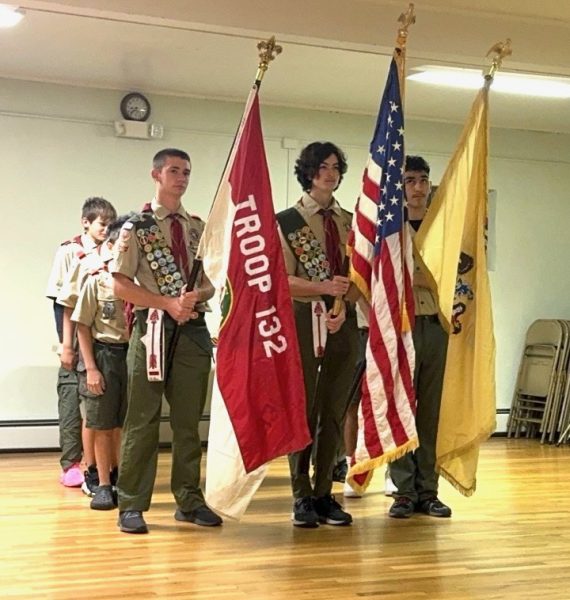Top 5 Classroom Review Games: Ranked
Teachers take note: these are the best review games to engage your students.
The learning of facts and figures for a unit has been completed – and now it’s time to study for the upcoming assessment. Review days often have the potential to be the most enjoyable parts of a class for students, thanks in large part to the exciting virtual review games made especially popular in recent years.
Well-known names like Kahoot and Blooket offer students a chance to prepare for a test or quiz while also having fun and being able to communicate more actively with their peers. It’s no secret that teachers take lots of time to carefully prepare lesson plans, and we know that it’s not always possible to work a fun review game into the limited amount of class time that most teachers have. But on those magical occasions where teachers are able to make time for a classroom review game, students receive an exciting block of educational fun – so let’s take a look at five classic classroom choices and consider what each of them has to offer.
#5 – Blooket
Time for more Season 4 updates!
The new Class Pass has released, offering 100 new items for students to collect and use to decorate their custom Blooks!
There is also a new weekly shop in the Market where students can buy banners and titles to spice up their profile!! pic.twitter.com/ln71sX5UDf
— Blooket (@PlayBlooket) September 28, 2022
Blooket is a well-known online review game with a variety of configurations contained within, and does an excellent job of balancing educational and entertaining aspects. With a wide selection of gamemodes, including activities for both team and individual play, teachers can give their students a unique experience each time they review.
Students’ icons, called Blooks, are little characters that represent them when playing. Students can use the points that they earn at the end of each game of Blooket to unlock new Blooks. This is a useful feature for teachers who seek a game that students will enjoy without it being insufficiently educational; students are given an added element of fun that can be enjoyed on their own time as opposed to during class, then they can show off their newly unlocked Blooks next time the class plays the game.
For all of its good qualities, it should be noted that Blooket is not always fun for all students. The vast number of gamemodes offered is beneficial overall, but is not without its drawbacks. Gamemodes on Blooket tend to get very focused on the theme or type of that particular game, which for some students can mean playing a game that they don’t enjoy while still having to answer review questions. Teachers of larger classes may wish to consider options other than Blooket where there is a better chance that the class as a whole will all have a fun time while reviewing.
#4 – Gimkit
Gimkit – for better or for worse – is without a doubt one of the most videogame-like entries on this list. Like many online review games, Gimkit features various gamemodes. In classic Gimkit, students answer multiple choice questions to receive points. These points can be spent on upgrades which allow them to earn more points, more quickly, with each question they answer correctly. As you’d expect, the winner is the student with the most points at the end of the game.
Believe it or not, Gimkit’s standard gamemode is relatively tame. For added fun, other options include ‘Trust No One,’ an Among Us inspired gamemode, ‘The Floor is Lava,’ where the class works together to answer questions correctly to keep a building from sinking into lava, and ‘Humans vs. Zombies’ with students divided into two teams. All of these game types give added entertainment within their educational use.
Gimkit is a solid review option and can offer a great new experience for classes of teachers who usually stick to other methods of classroom review. It is particularly distinctive for its creative ways of offering class-wide, team-based and individual-based gamemodes which all still center around answering review questions correctly. Granted, teachers who are looking for a review game that is fun without being too entertaining may wish to look at other options.
#3 – Non-line Review Methods
Computer-based review games can be fun – but older styles of classroom review have stood the test of time, and don’t deserve to be omitted from this list. Classic options, like simple trivia games, races to answer a question first, group competitions, etc. all provide a means of educational but entertaining classroom review without the need for devices; furthermore, instead of being bound by the limitations of a review game’s website, teachers can create and customize any type of review activity they want.
Plus, ‘pencil-and-paper’ games, so to speak, are often better for teachers who want to divide students into teams as opposed to opting for an online review game, where solo competition is usually both the default and the preference of students. A popular option is to divide students into groups with mini-whiteboards and ask on-topic trivia questions, giving points to the teams which provide correct answers.
While the excitement and engagement students exhibit from offline review tends to be reduced compared to an online game, it is often easier to keep students focused and on-topic with this method, unlike online games, where some teachers may feel that there is too much entertainment mixed in with education. Of course, in the choice between an old-school review game and no game at all, students will be quick to choose the former – and will be grateful to their teachers for its occurrence.
#2 – Jeopardy
Inspired by the same-named TV show, Jeopardy review games can be time consuming to set up, but offer an extremely customizable experience that maximizes educational content while still giving students a fun review experience. Jeopardy works exceptionally well for team play – students can be divided into teams, and each team works together to come up with responses.
The beauty of using Jeopardy as a classroom review game is in its versatility. Teachers are able to decide how many categories there are, how many questions per category, and whether to include daily doubles (the clues where players can wager their winnings-so-far, losing them for an incorrect response but gaining an advantage for a correct one.) Just like in real Jeopardy, harder questions can be made to be worth more, while easier questions are worth less. Teachers can also decide whether to utilize a typical question-and-answer format, or stay true to the show’s answer-and-question format. (Special shoutout to teachers that stay especially true to the show and don’t give points to teams who fail to phrase their responses in the form of a question.) In classroom Jeopardy, it should be noted, it’s typical for teachers to let every team answer every question, and simply rotate around the room to decide who picks what clue to go to next.
All of this flexibility may be overwhelming and sound like a lot of work, but sites like JeopardyLabs can provide teachers with a means of creating their own Jeopardy games without having to wrestle with the manual creation of their own game via another application.
It should be noted that reviewing with Jeopardy is generally inefficient if students are playing individually, unless the class size is very small. Too much time taken to check every student’s answer and keep track of everyone’s points hurts both the fun and educational value of the review. Teachers wishing to play Jeopardy should strongly consider utilizing a team setting; teachers who would prefer an individual-based review game should look into other methods – particularly the final options on this list.
#1 – Kahoot!

The classic – the legend itself. With its famous theme music, Kahoot! has served since 2013 as the premier classroom review option, and for good reason. No game comes close to achieving the level of perfection that has been attained by Kahoot.
Kahoot is the perfect balance of education and fun. Unlike many of the other games on this list, Kahoot is exactly what it sets out to be: a trivia game. Students answer questions and are rewarded for correct answers. The faster they give a correct answer, the more points they receive. In contrast with other games, Kahoot does not offer students ridiculous power-ups, let them sabotage their classmates, or assign points based on randomly-generated values. Instead, the way to win a Kahoot game is to be able to answer questions both correctly and efficiently – which is exactly the way it should be.
In Kahoot, students are rewarded for being the most familiar with understanding and applying classroom material, not for being the luckiest or the most skilled at a minigame between questions. Kahoot’s beauty is in its simplicity, and it’s why Kahoot should be the first consideration for teachers looking for a fun review game to play with their classes.

Stephan Schwab is a senior at LRHS and this is his third year writing for The Lancer Ledger. He is the Editor-in-Chief of The Ledger and President of the...








Mr Hawes • Jan 30, 2023 at 8:07 am
Thank you for your review. These are all resources I have used in my high school classes when reviewing for a test. There is only one thing I wanted to add to your breakdown. Kahoot is a great review tool but due to the nature of the game, the ones you laid out, I can almost always tell you who will win in my class before the game begins. Which is great for those kids who already know the material well but can be disheartening for students still brushing up on the content. The positive of having those boosts, and random amounts is giving more students a chance to compete.
Again, thank you for your breakdowns of these review games.